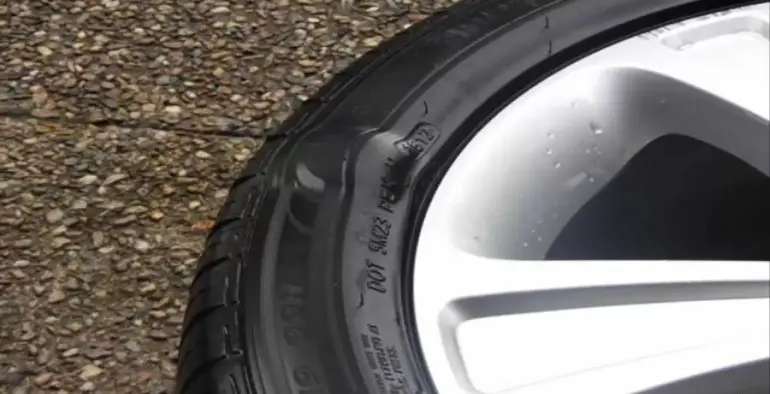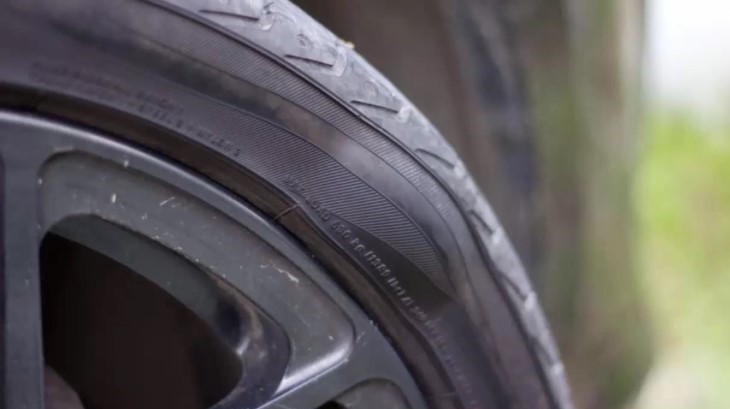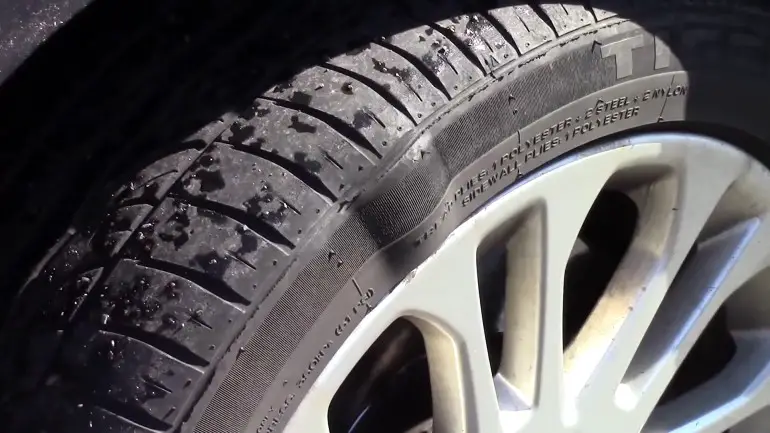If you’ve ever been driving and noticed your car starting to wobble, it may be because of a bubble in your tire. Bubbles can form for many reasons, but the most common cause is a puncture.
When air escapes from the hole, it forms a bubble on the surface of the tire. If the bubble gets too big, it can cause the tire to go out of balance and lead to safety issues while driving. In this post, we’ll take a look at what causes bubbles in tires and how to fix them.
We’ll also explore some myths about bubbles that you may have heard before.
Read on to learn more!
What Causes a Bubble in a Tire

Have you ever noticed a bubble in your tire? It’s not the most pleasant thing to see, but what causes it and what can you do about it? In this blog post, we’ll take a look at what causes a bubble in a tire and what you can do to fix it.
We’ll also discuss some other potential problems with tires that you should be aware of.
So, if you’re curious about bubbles in tires, keep reading! 😉
What Do Bubbles in Tires Mean?
It’s happened to everyone who has ever driven a car before. You’re driving along, minding your own business, when you suddenly notice a bubble in your tire. What does it mean? Is it time to get a new tire? What’s going on?
Bubbles in tires usually mean that the tire is leaking air. It could be a small leak that you can easily fix, or it could be a more serious problem that requires a new tire. If you notice a bubble in your tire, the best thing to do is to take it to a mechanic and have them take a look.
They’ll be able to tell you if you need a new tire or if you can just patch up the leak. So, next time you see a bubble in your tire, don’t panic! Just take it to a mechanic and they’ll sort everything out for you.
What Causes Tire Bubbles?
- Driving with a flat tire
is never a good idea. If you have a bubble in your tire, it means that the tire is flat or close to flat. There are several reasons why this might happen:
You have a puncture: If you hit something sharp while driving, it can cause a puncture in your tire. This will let the air out of the tire and cause a bubble to form.
You have a slow leak: If you have a small hole in your tire, it can cause a slow leak. Over time, this will let all the air out of the tire and cause a bubble to form. However, a tire blowout can occur if the air bubble in your tire is kept under tremendous pressure, although this is rare.
You’re driving with too much air pressure: If you have too much air in your tires, it can cause them to burst. This will let all the air out of the tire and cause a bubble to form.
- Railway Crossing
There’s a common myth that bubbles in tires come from driving over a railway crossing. The theory goes that the uneven surface of the tracks causes the air pressure in the tires to fluctuate, creating a bubble.
However, there’s no evidence to support this claim. In fact, the vast majority of tire bubbles are caused by other factors, such as damage to the tire wall or bead. So, if you’re ever driving over a railway crossing and notice a bubble in your tire, don’t panic. It’s probably not due to the tracks.
- Driving over rough roads
We’ve all seen those cars driving down the road with what looks like a huge beach ball on their roof. And we’ve all wondered, “Do they know something we don’t?” Well, it turns out that they might be onto something. It turns out that driving over rough roads can cause bubbles to form in your tires.
The reason for this is that the rough road surface can cause the air pressure in your tires to increase. This increase in pressure can cause the tire to expand and form a bubble. So, if you’re ever driving down a rough road and you see a car with a big beach ball on its roof, now you know why!
- Hitting the curb
Conspiracy theorists believe that the government is behind the existence of a bubble on a car tire. Theorists believe that the government puts bubbles in tires to prevent people from driving too fast.
This is when a spare tire comes in handy. There is no evidence to support these claims. However, some people believe them anyway. Bumping into a curb A quick and unintentional bumping into a curb can cause low-profile tire sidewall bubbles. Tires with bubbles cannot be fixed, unlike flat tires, which may be repaired.
how to Prevent Tire Bubbles Formation

Tire bubbles are a common problem that can lead to serious tire damage. They occur when the air pressure in the tire is too low, causing the tire to flex and bulge. This can cause the tire to eventually burst, leading to a dangerous situation. There are a few things you can do to help prevent tire bubbles from forming.
First, make sure that your tires are properly inflated. This will help to reduce the amount of flexing and minimize the risk of a bubble forming.
Second, avoid driving on rough roads whenever possible. This can put extra stress on the tires and increase the chances of a bubble forming.
Third, have your tires regularly inspected by a professional. They will be able to spot any potential problems and take steps to prevent them from becoming serious.
Following these simple tips will help you avoid tire bubbles and keep your tires in good condition.
- Don’t Overload Your Car
Your car has a weight limit that it can safely carry. This includes the weight of the passengers, the cargo, and the vehicle itself. If you exceed this limit, it puts extra strain on the tires. If you’re carrying around more weight than your car can safely handle.
It’s time to lighten the load. Remove any unnecessary items from the trunk and make sure that the passengers are distributed evenly throughout the vehicle. This will help to prevent tire problems and keep your car running safely.
- Avoid Large Potholes and Speed Bumps
Potholes and speed bumps are two of the most common causes of tire bubbles. They can cause the air pressure in the tires to increase, which can lead to a bubble forming. To avoid this, try to avoid driving over large potholes and speed bumps whenever possible.
If you can’t avoid them, slow down and take them slowly to minimize the impact. Tire blow-out Tire Pressure Often, finding a tire bubble means that the tire pressure wasn’t ideal for a long time. The presence of air bubbles in a tire has the potential to cause a serious accident.
- Regular Tires Checkups
The best way to avoid tire problems is to have the tires regularly inspected by a professional. They will be able to spot any potential issues and take steps to prevent them from becoming serious.
Another benefit of frequently inspecting your car tires is that it can help you spot problems before they become more serious. inspections and rotations also improve vehicle performance, help you retain your tire manufacturer’s warranty, and contribute to better gas mileage. And if it is from manufacturing defects, the tire manufacturer will replace it.
Is It Safe to Drive with Tire Bubbles?
No, it is not safe to drive with tire bubbles. Tire bubbles are a serious problem that can lead to tire Bursting. This can cause you to lose control of your car and put yourself and others in danger.
If you see a bubble in your tire, take it to a mechanic as soon as possible to have it repaired or replaced.
Final Thoughts
It’s a pain when your tire goes flat, but it’s even worse when you get a bubble in your tire. No one wants to deal with that, so hopefully, this article has helped you understand what causes them and how to prevent them.
As always, if you have any questions or comments, feel free to reach out and let us know.
We love hearing from our readers!

